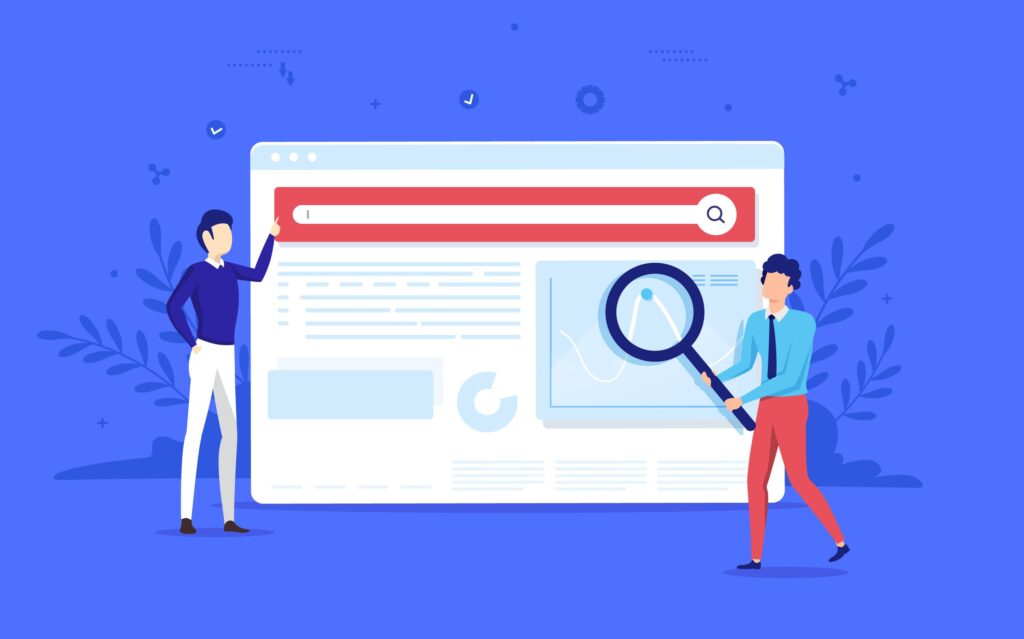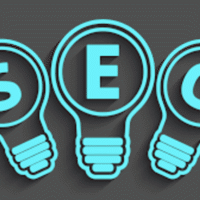
Understanding the Foundations of On-Page SEO
On-page SEO represents the practice of optimizing individual web pages to rank higher in search engine results and earn more relevant traffic. Unlike off-page SEO which focuses on external signals like backlinks, on-page optimization puts you in direct control of elements that search engines use to understand and rank your content. In 2025, mastering on-page SEO has become more critical than ever as search algorithms grow increasingly sophisticated, with AI-powered systems like Google’s SGE analyzing content structure, user intent, and page quality in ways that demand precise technical optimization combined with exceptional user experience.
The core elements of on-page SEO include meta tags, title tags, header tags, and URL structure, each serving as vital communication channels between your website and search engines. These elements work together to create a cohesive narrative about your page’s content, purpose, and value. When properly optimized, they help search engines quickly understand what your page offers, determine its relevance to specific queries, and decide where it should rank in search results. More importantly, these elements directly impact how users perceive your content in search results, influencing whether they click through to your site or choose a competitor’s listing instead.
Think of on-page SEO elements as the architecture of your content. Just as a well-designed building needs a solid foundation, clear signage, and logical room layouts to be functional, your web pages require properly structured tags and URLs to perform effectively. Search engines crawl billions of pages daily, and they rely on these structural elements to quickly categorize and index content. Without proper optimization, even the most valuable content can remain invisible to potential visitors, buried beneath competitors who understand how to communicate effectively with search algorithms.
Title Tags: Your First Impression in Search Results
The title tag is arguably the single most important on-page SEO element, functioning as the clickable headline that appears in search engine results pages. This HTML element, placed within the head section of your page code, tells both search engines and users what your page is about. Google typically displays the first fifty to sixty characters of a title tag, making brevity and clarity essential. A well-crafted title tag can dramatically impact your click-through rate, with studies showing that pages with optimized titles receive significantly more clicks than those with generic or poorly constructed titles, even when ranking in similar positions.
Creating effective title tags requires balancing multiple priorities simultaneously. You need to include your primary keyword to signal relevance to search engines, but you also need to craft compelling copy that motivates users to click. The best title tags place the most important keyword near the beginning, as search engines give slightly more weight to terms that appear earlier in the title. For example, instead of writing “Learn How to Bake Delicious Chocolate Chip Cookies,” a more optimized version would be “Chocolate Chip Cookie Recipe: Easy Baking Guide for Beginners.” This structure front-loads the primary keyword while still maintaining readability and appeal.
Every page on your website should have a unique title tag that accurately reflects its specific content. Duplicate title tags confuse search engines about which page should rank for which queries, often resulting in neither page ranking as well as it could. When writing title tags, consider incorporating power words and numbers that attract attention. Terms like “Ultimate,” “Complete,” “Best,” “Top,” and specific numbers like “10” or “2025” can increase perceived value and urgency. A title like “10 Best SEO Tools for Small Businesses in 2025” performs better than “SEO Tools for Businesses” because it promises specific, current information while signaling comprehensive coverage.
Modern title tag optimization must also account for mobile displays, where character limits are even more restrictive than desktop. Google may truncate titles after forty to fifty characters on mobile devices, meaning your most critical information must appear within the first few words. Additionally, search engines sometimes rewrite title tags they deem irrelevant or poorly constructed, pulling alternative text from your page content or meta description. While Google claims these rewrites improve user experience, they often dilute your carefully chosen keywords and messaging. To minimize automatic rewrites, ensure your title tags accurately reflect page content, avoid keyword stuffing, and maintain reasonable length limits.
Title Tag Best Practices for Maximum Impact
Implementing title tag best practices requires attention to several key principles that together create optimal performance. First, maintain strict length discipline by keeping titles between fifty and sixty characters for desktop optimization, with the understanding that mobile displays may show even fewer characters. Use online title tag preview tools to visualize how your titles will appear across different devices and screen sizes. Second, prioritize keyword placement by positioning your primary target keyword as close to the beginning as possible, ideally within the first three words. This front-loading strategy helps search engines quickly identify your page’s main topic while ensuring users see the most relevant information even if the title gets truncated.
Third, create uniqueness across your entire site by ensuring no two pages share identical title tags. This differentiation helps search engines understand your site structure and prevents internal competition for rankings. Fourth, incorporate branding strategically by adding your company name at the end of title tags, separated by a pipe or hyphen. For example, “Beginner’s Guide to SEO | YourBrand” maintains focus on the topic while reinforcing brand recognition. However, for pages targeting competitive keywords where every character counts, consider omitting the brand name to preserve space for descriptive terms that drive clicks.
Fifth, avoid common pitfalls that undermine title tag effectiveness. Never stuff multiple keywords into a single title, as this creates awkward, spammy-looking listings that users avoid and search engines may penalize. Similarly, resist the temptation to use clickbait titles that promise content your page doesn’t deliver, as this generates high bounce rates that ultimately harm your rankings. Sixth, test and iterate your title tags based on performance data. Use Google Search Console to monitor click-through rates for different pages, identifying titles that underperform relative to their average position. A page ranking in position five but receiving clicks comparable to position ten indicates a weak title that needs improvement.
Meta Descriptions: Compelling Previews That Drive Clicks
Meta descriptions function as your page’s sales pitch in search results, appearing as the two to three line snippet beneath your title tag. While meta descriptions don’t directly influence rankings, they significantly impact click-through rates, which indirectly affects your SEO performance. Google displays approximately one hundred fifty to one hundred sixty characters of meta descriptions on desktop and about one hundred twenty characters on mobile, though these limits fluctuate based on pixel width rather than strict character counts. A compelling meta description can be the difference between a user clicking your listing or scrolling past to a competitor, making it a critical element of on-page optimization.
Crafting effective meta descriptions requires understanding user intent and matching your description to the searcher’s expectations. For informational queries, describe what users will learn and why your content provides the best answer. For commercial queries, highlight unique value propositions, special offers, or competitive advantages. For transactional queries, use action-oriented language that encourages immediate engagement. For example, a meta description for “best wireless headphones 2025” might read: “Compare the top 10 wireless headphones of 2025 with expert reviews, real user ratings, and detailed sound quality analysis. Find your perfect pair today.” This description promises comprehensive information, current data, and practical guidance, all elements that appeal to comparison shoppers.
Meta descriptions should incorporate your primary keyword naturally, as search engines often bold matching terms when they appear in descriptions, making your listing more visually prominent. However, focus primarily on writing for humans rather than search engines. Your description needs to read smoothly and persuasively, not like a collection of keywords strung together awkwardly. Include a clear call-to-action when appropriate, using verbs like “discover,” “learn,” “explore,” “compare,” or “get” to prompt user engagement. Specificity improves performance, so instead of vague claims like “we offer great service,” provide concrete details like “free shipping on orders over fifty dollars” or “same-day installation available in most cities.”
One critical consideration is that Google rewrites meta descriptions approximately sixty to seventy percent of the time, pulling alternative text from your page content that it deems more relevant to specific queries. While you can’t prevent these rewrites entirely, you can minimize their frequency by writing descriptions that comprehensively summarize page content, match user intent, and avoid promotional language that search engines consider low-quality. When Google does rewrite your description, view it as feedback about potential misalignment between your intended message and how search algorithms interpret your content.
Meta Description Optimization Strategies
Optimizing meta descriptions effectively requires following established best practices while also testing creative approaches that differentiate your listings. Start by maintaining length discipline, keeping descriptions between one hundred forty and one hundred sixty characters to ensure full display on most desktop devices. For mobile-first optimization, consider creating descriptions closer to one hundred twenty characters that convey your core message within tighter constraints. Include your primary keyword naturally near the beginning of the description, as this increases the likelihood of bold highlighting in search results while reinforcing relevance to both users and algorithms.
Structure your descriptions to address user intent directly by answering the implicit question behind their search query. For “how-to” queries, preview the steps or process your content covers. For comparison queries, mention the specific items or options you evaluate. For local queries, include location information and service availability. Use formatting like em dashes or vertical bars to separate distinct value propositions within a single description, creating visual breaks that improve scannability. For example: “iPhone 15 Pro Review — Camera quality, battery life, and performance testing | Updated January 2025.”
Avoid duplicating meta descriptions across multiple pages, as this wastes valuable opportunities to differentiate your content and target varied search intents. Each page addresses unique user needs, and descriptions should reflect these differences. However, for sites with thousands of pages, manually creating unique descriptions becomes impractical. In these cases, prioritize high-value pages like homepage, main category pages, and top-performing content for custom descriptions, while using programmatic templates for less critical pages. These templates might pull data from page titles, categories, or product attributes to generate reasonably unique descriptions automatically.
- Write for humans first, search engines second: Your meta description needs to persuade real people to click, so prioritize compelling copy over keyword optimization. Use natural language that clearly communicates value and sets accurate expectations about page content. Remember that users scan search results quickly, so your description must grab attention immediately with clear, specific benefits.
- Include quantifiable details when relevant: Numbers and specific data points make descriptions more credible and actionable. Instead of “many options available,” specify “over 500 products in stock.” Rather than “fast delivery,” state “2-day shipping to most addresses.” These concrete details help users evaluate whether your page meets their specific requirements before clicking.
- Match the user’s search intent explicitly: If someone searches “how to fix leaky faucet,” your description should immediately confirm that your page provides step-by-step repair instructions. Don’t make users guess whether your content addresses their specific need. Use language that mirrors common search queries to signal instant relevance.
- Create urgency when appropriate without being misleading: For time-sensitive content or offers, incorporate deadline language like “2025 guide,” “current deals,” or “limited availability.” However, never fabricate urgency or make promises your page doesn’t fulfill, as this damages both user trust and long-term SEO performance through increased bounce rates.
- Test variations systematically using A/B testing tools: Don’t assume your first attempt is optimal. Use tools like Google Search Console to identify pages with low click-through rates relative to their ranking positions, then test revised descriptions that emphasize different value propositions, use alternative calls-to-action, or restructure information presentation.
- Consider query-specific customization for high-value pages: While typically each page has one meta description, advanced implementations can serve different descriptions based on the referring search query or user location. This dynamic approach requires technical expertise but can significantly improve relevance and click-through rates for important pages.
Header Tags: Creating Clear Content Hierarchy
Header tags from H1 through H6 provide hierarchical structure to your content, functioning like an outline that helps both users and search engines navigate and understand your page. The H1 tag serves as your page’s main headline, while H2 through H6 tags create progressively more detailed subsections. Proper header tag implementation dramatically improves content scannability, allowing users to quickly locate relevant sections without reading everything linearly. For search engines, header tags provide clear signals about topic organization, content priorities, and semantic relationships between different sections, all of which influence how algorithms assess page quality and relevance.
Your H1 tag is the single most important header element, representing the primary topic or purpose of your page. Best practices dictate using only one H1 per page to maintain clear topical focus, though HTML5 technically allows multiple H1 tags. Your H1 should include your primary target keyword and accurately reflect the page’s main subject, ideally in sixty characters or fewer. Think of the H1 as your page’s thesis statement—it should immediately communicate what users will find on the page. For example, a comprehensive guide might use the H1 “Complete Guide to Email Marketing for Small Businesses,” clearly establishing both the topic and target audience.
H2 tags function as your main section headings, breaking content into digestible chunks organized around major subtopics. A well-structured long-form article might have five to ten H2 sections, each exploring a different aspect of the main topic established in the H1. These H2 headings should incorporate secondary keywords and related terms naturally, supporting the page’s overall keyword strategy without appearing forced. Continuing the email marketing example, appropriate H2 sections might include “Building Your Email List,” “Crafting Effective Email Content,” “Choosing Email Marketing Software,” and “Measuring Campaign Performance.” Each H2 introduces a major topic area that contributes to the comprehensive coverage promised in the H1.
H3 tags provide additional structure within H2 sections, allowing you to break down complex topics into more specific subtopics. These third-level headers might target long-tail keyword variations and answer specific questions related to the parent H2 topic. For instance, under the H2 “Building Your Email List,” you might use H3 tags for “Creating Lead Magnets,” “Optimizing Signup Forms,” and “Using Social Media to Grow Your List.” H4 through H6 tags see less frequent use but serve valuable purposes in highly detailed content, technical documentation, or complex guides requiring multiple layers of organization. The key principle across all header levels is maintaining logical hierarchy—never skip levels by jumping from H1 to H3, as this creates structural confusion.
Header Tag Implementation Best Practices
Implementing header tags effectively requires understanding both the technical requirements and the user experience considerations that make them valuable. Start with the fundamental rule of using only one H1 tag per page, ensuring it clearly establishes your primary topic. This H1 should differ slightly from your title tag to avoid duplication while still targeting the same core keyword. For example, if your title tag is “SEO Guide for Beginners | 2025 Edition,” your H1 might be “The Complete Beginner’s Guide to Search Engine Optimization.” This provides variation while maintaining topical consistency.
Maintain strict hierarchical order throughout your content, never skipping levels in the progression from H1 through H6. If you use an H2, any subsequent subsections should use H3 tags until you start a new H2 section. This logical nesting helps screen readers navigate content for users with visual impairments while signaling clear content relationships to search engines. When planning your header structure, create an outline before writing, identifying your main sections (H2s) and key subsections (H3s) to ensure comprehensive topic coverage and logical flow.
Incorporate keywords naturally throughout your header hierarchy, using primary keywords in H1 and early H2 tags, then transitioning to secondary keywords and long-tail variations in later H2s and H3 tags. This distribution signals topical depth without appearing manipulative. However, prioritize readability and user value over keyword insertion—headers should accurately describe the content that follows, helping readers quickly locate information they seek. Avoid keyword stuffing or creating awkward phrasing just to include target terms.
Keep header text concise and descriptive, ideally under seventy characters for H1 and H2 tags to ensure they remain scannable at a glance. Longer headers work against the scannability that makes them valuable in the first place. Use actionable language when appropriate, particularly for instructional content. Headers like “How to Optimize Images for Web” or “Choosing the Right CMS Platform” clearly indicate what information follows, setting accurate expectations that improve user satisfaction. For listicle-style content, number your H2 headers to create clear structure and set expectations about content length, such as “1. Research Your Target Keywords” and “2. Analyze Competitor Content.”
URL Structure: Creating SEO-Friendly Web Addresses
URL structure optimization represents one of the most overlooked aspects of on-page SEO, yet it directly impacts both search engine understanding and user experience. A well-structured URL communicates page content and hierarchy clearly, making it easier for search engines to categorize your pages and for users to understand where they are within your site. Clean, descriptive URLs also improve click-through rates from search results, as users instinctively trust readable URLs more than long strings of random characters, session IDs, or database parameters. When users can read and understand a URL before clicking, they feel more confident about the destination and more likely to engage.
The ideal URL structure uses hyphens to separate words, includes relevant keywords, maintains reasonable length, and creates a logical hierarchy that reflects your site’s information architecture. For example, “example.com/digital-marketing/seo-guide/on-page-optimization” clearly indicates a hierarchical structure where on-page optimization sits within an SEO guide, which belongs to a broader digital marketing category. This structure helps search engines understand topical relationships while allowing users to navigate by editing the URL directly if they want to move up one level in the hierarchy. Contrast this with “example.com/page.php?id=12345&cat=7&session=xyz,” which provides no contextual information and creates a poor user experience.
URL length impacts both SEO and user experience, with shorter URLs generally performing better than excessively long ones. While there’s no strict character limit, aim to keep URLs under sixty characters when possible, certainly under one hundred characters except in rare cases requiring more specificity. Shorter URLs are easier to share, remember, and analyze at a glance. They also provide cleaner social media sharing experiences, as some platforms truncate long URLs or display them in ways that look spammy. Remove unnecessary words like “and,” “the,” “of,” and “a” from URLs to maintain brevity while preserving meaning. “example.com/guide-to-seo” works just as well as “example.com/a-guide-to-search-engine-optimization” while being significantly shorter.
Include your primary keyword in the URL when relevant and natural, but avoid keyword stuffing or creating repetitive structures. If your page targets “email marketing tips,” a URL like “example.com/email-marketing-tips” works perfectly. However, “example.com/email-marketing-tips-best-email-marketing-tips-2025” appears manipulative and provides no additional value. Utilize consistent category structures across your site, establishing clear URL patterns that users and search engines can predict. For an e-commerce site, this might mean following a pattern like “example.com/category/subcategory/product-name” for all products, creating predictable, logical navigation paths.
URL Optimization Strategies and Common Mistakes
Optimizing URL structure effectively requires understanding both what to do and what to avoid. Start by using lowercase letters exclusively, as URLs are case-sensitive and mixed-case variations like “Example.com/Page” and “example.com/page” technically represent different pages, potentially creating duplicate content issues. Stick to hyphens rather than underscores to separate words, as search engines treat hyphens as word separators but often interpret underscores as connectors, meaning “seo-tips” is read as two words while “seo_tips” may be treated as one compound term.
Avoid dynamic parameters whenever possible, particularly for important pages you want to rank well. While search engines can now process dynamic URLs with parameters, clean static URLs still provide better user experience and slightly better SEO performance. If your CMS generates dynamic URLs by default, investigate plugins or settings that create clean URL rewrites. For WordPress sites, enabling “pretty permalinks” transforms “example.com/?p=123” into readable formats like “example.com/post-title.” Similarly, e-commerce platforms typically offer URL customization options that remove session IDs and database parameters.
Plan URL structure before launching new site sections, as changing URLs after content gains traction requires implementing redirects that can temporarily impact rankings. Establish naming conventions and category hierarchies that scale as your site grows, avoiding the need for future restructuring. When URL changes are unavoidable, always implement proper 301 redirects from old URLs to new ones, preserving accumulated SEO value and preventing broken links. Never leave old URLs returning 404 errors if the content has simply moved to a new location.
Remove stop words strategically to shorten URLs without sacrificing clarity. While “example.com/how-to-bake-chocolate-chip-cookies” is perfectly fine, “example.com/bake-chocolate-chip-cookies” conveys the same information more concisely. However, maintain readability—”example.com/bake-choc-chip-cook” goes too far, creating confusion through excessive abbreviation. Consider implementing breadcrumb navigation that mirrors your URL structure, reinforcing the hierarchical relationships visible in URLs and helping users understand their location within your site’s information architecture.
Integrating On-Page Elements for Maximum Impact
While each on-page SEO element serves specific purposes, their true power emerges when they work together as an integrated optimization system. Your title tag, meta description, H1 header, and URL should all reinforce the same primary keyword and topic while varying slightly in phrasing to avoid repetition that appears manipulative. For example, a page targeting “organic social media marketing” might use “Organic Social Media Marketing Strategies” as the title tag, “Learn proven organic social media marketing techniques to grow your audience without paid advertising” as the meta description, “Master Organic Social Media Marketing in 2025” as the H1, and “example.com/social-media/organic-marketing-strategies” as the URL. These elements harmonize around the core topic while each contributing unique value.
This coordinated approach signals clear topical focus to search engines while avoiding the duplicate content that can occur when identical text appears across multiple on-page elements. The variation also provides multiple opportunities to include related keywords and semantic variations that strengthen overall relevance. Within your content, header tags should create a logical progression that fulfills the promise made in your title and meta description, delivering the comprehensive coverage or specific solutions that attracted users to click your listing in the first place.
Regular audits of your on-page elements help identify optimization opportunities and inconsistencies that undermine performance. Use tools like Google Search Console to monitor which pages receive impressions but low click-through rates, indicating weak titles or descriptions. Check for duplicate title tags or meta descriptions across multiple pages, as these create missed opportunities for differentiation and targeted messaging. Analyze header tag implementation using browser developer tools or SEO crawlers, ensuring proper hierarchy and keyword distribution throughout your content. Review URL structures for consistency, looking for outdated patterns or unnecessarily long paths that could be simplified.
Conclusion
Mastering on-page SEO through optimization of meta tags, title tags, header tags, and URL structure provides a foundation for search engine success that remains firmly within your control. Unlike off-page factors like backlinks that depend on external websites, these on-page elements can be refined and perfected through deliberate effort and strategic implementation. The title tag serves as your first impression, combining keyword relevance with compelling copy that drives clicks. Meta descriptions function as your sales pitch, converting impressions into visits through clear value communication. Header tags provide the organizational structure that makes content scannable and accessible while signaling topical hierarchy to search algorithms. Clean URL structure creates intuitive navigation paths that benefit both human users and search engine crawlers.
Success in on-page SEO requires balancing technical optimization with user experience considerations, never sacrificing readability or usability in pursuit of marginal keyword advantages. Search engines have evolved to prioritize content that genuinely serves user needs, making manipulation tactics not only less effective but potentially harmful to long-term performance. By focusing on clear communication, logical structure, and authentic value delivery through your on-page elements, you create sustainable SEO performance that withstands algorithm updates and changing search trends. Implement these optimization strategies systematically across your website, starting with your highest-priority pages and gradually expanding coverage as resources allow, and you’ll establish the technical foundation necessary for sustained search visibility and organic traffic growth.



















